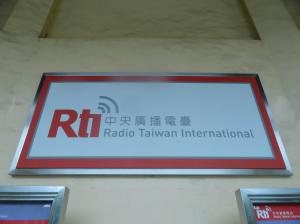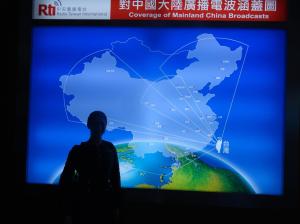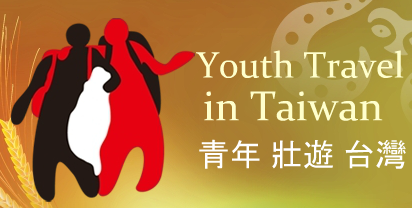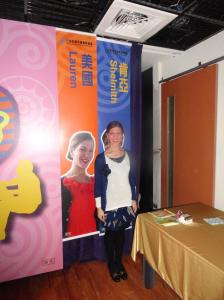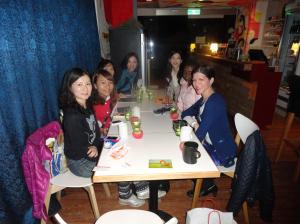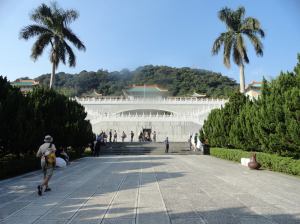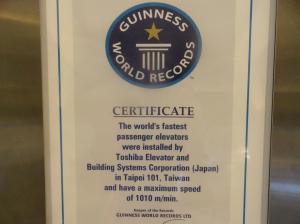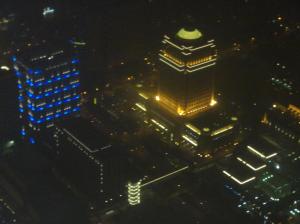“In our evolution language has been the greatest single contribution to our understanding and misunderstanding”
~ Rasheed Ogunlaru
After a whirlwind trip to Taiwan that left me with some fantastic memories, I made it back to London yesterday. I’m profoundly grateful for my experience, and throughout the trip I kept laughing at how I had worried beforehand that I might get bored being on such a “small” island for 10 days. I left with a laundry list of unaccomplished goals personally and professionally. I want to do everything I can to come back ASAP, and if I can somehow keep this ambassadorship going beyond a 10-day trek, I want to make it happen.
But let’s be real: the sunrises, mountains, people, and food aren’t all there is to travel! If I told you constantly how amazing this trip was, would you believe me? Would you wonder about any of the barriers I hit navigating a foreign country around the world where I don’t speak the language alone? About the jet lag that’s been so bad the past two days that it’s left me in tears? About being so thankful to have an unmatched travel experience but wanting to be home at the same time?
If this blog has been more descriptive than narrative, I’m sorry. I don’t tend to like books that describe, describe, describe without actually telling a story. I want dialogue, and lots of it! The problem is that with me not speaking more than two words of Chinese, there wasn’t much dialogue to be had on this trip.
There were, however, more moments of misunderstanding on my part, with even more moments of kindness on the Taiwanese’s part. For that reason, I’ve compiled a list of Top 10 moments from this trip, complete with a group of total strangers with no obligation towards me going out of their way to be good people for no reason. If it restores your faith in humanity a little, then writing this has been worth it:
10) Babel: I am unsure of where I am supposed to meet Portnoy Zheng at the Association of Digital Culture, Taiwan‘s office and, on only my second day in town, have no idea how to get there.
Good Samaritan: The National Youth Commission lets me call Portnoy from their office using their phone (so I don’t have to pay to use my own internationally)-and I find out that his office number is the one next to their own.
9) Babel: I have the name of my second hostel written down in Chinese, but not in English-which proves to be a problem when trying to locate it my second night in the dark.
Good Samaritan: An older couple spends at least 10 minutes, if not more, helping me locate my hostel despite speaking less English than I do Chinese after I show them the address and can’t do any more than shrug, point, and say, “Thank you.”
8) Babel: I pay 100 NTD at Starbucks to use their WiFi, only to find out upon trying to log in with it that it requires a Taiwanese cell number that I don’t have.
Good Samaritan: A fellow Italian-American who does frequent business in Taiwan lets me enter his cell number so that I can use the Internet I’ve paid for.
7) Babel: On the bus from Chiyai to Alishan, I only have a 500 NTD bill, and the bus driver (who doesn’t speak English) wants exact change.
Good Samaritan: Seeing the confusion, a fellow passenger, who also doesn’t speak English, offers me five one hundreds bills in exchange for my larger bill so that I don’t have to go back off the bus to make change.
6) Babel: I have no idea how to get from the bus stop to my hotel (Alishan House) once we get up the mountain.
Good Samaritan: another fellow passenger, bilingual in Chinese and English, asks the bus driver in Chinese how to get there. When I tell her I had wanted to call the hotel myself but was worried they wouldn’t speak English, she says, “Oh, that’s okay! One of us can call for you!”
5) Babel: While packing, it somehow slipped my mind that waking up at sunrise in the mountains-in November-means it will be cold. As I stand in the lobby of my Alishan hotel waiting to go see their famous sunrise, I realize I’m in for a rough few hours.
Good Samaritan: A woman at my hotel, there with her 81-year-old mother, remembers me from the shuttle to our hotel the day before and frowns at my light windbreaker. When I tell her it’s the warmest thing I’ve brought, she runs back up to her room to give me one of her own down jackets to where. I shudder (literally) to think what that sunrise would have felt like without it.
4) Babel: Despite arriving 30 minutes early for my bus from Alishan to the Chiyai High Speed Rail, the bus takes off without me at 4:40 pm (since it was a much larger bus than the one I’d taken up the mountain the day before, I had seen it there, but assumed it was for a different group). It is the last bus back down to Chiyai for the day, and I don’t have a room booked at the (very expensive) hotel I’ve stayed at in Alishan the night before.
Good Samaritan: A woman in 7-11 tells me, in broken English, that I can take another bus at 5:10 pm that will involve one switch, but will also be cheaper and have more room. She shows me the schedule and exactly where to wait.
3) Babel: Despite leaving over an hour for me to travel across Taipei from my hostel to National Chengchi University to speak with students, I miss my bus stop after not hearing the English pronunciation of it and get trapped on a 50-minute ride back in and out of the city. This makes me almost a full hour late for my visit.
Good Samaritan: a Korean student at NCU overhears me asking the bus driver (who can’t speak English) where we’re going and, seeing me get visibly upset, tells me I can follow him off the bus when we get off at that stop. He shows me a map of where I need to be, asks me questions about my visit, and directs me to the correct building. Horribly embarrassed that I’ve made these students wait so long, I approach the room with trepidation, knowing they have every right to be mad at me. To my surprise, they are more than gracious, and what was scheduled to be a 30 minute chat about studying media in Taiwan goes on for 90 minutes.
2) Babel: After assuming that cab drivers in Taiwan at least know the names of major government buildings in English, I get dropped off at the wrong address twice on my way to a meeting at the National Youth Commission.
Good Samaritan: With no Chinese translation for the address written down, a woman on the street directs me to the police station, where a group of officers looks up the address in Chinese for me and takes me-in a police car-to my meeting. Meanwhile, after the first cab driver drops me off at the MRT station instead of the NYC office, he apologizes profusely for not speaking English, saying over and over, “I’m sorry. I’m sorry.”
1) Babel: I lock myself out of my hostel bedroom on my way to the shower in a daze the morning I’m supposed to check out.
Good Samaritan: One of the managers walks through pouring rain from the other building to mine in order to key me back into my room.
Special shout out: After my 13 hour flight from Guangzhou and a 17 hour layover between Taipei and Guangzhou, my cab driver and I get stuck in three hour traffic from Heathrow to my house last night. Both of us hold our tongues despite being beyond miserable, and upon arriving at my house/helping my luggage out of the car, he kisses my cheek and says, “Get some sleep.”
I could have spent this post gushing about how utterly lovely the Taiwanese people-and (most) British cab drivers- are, but that wouldn’t be honest about the pitfalls of this trip. And I could complain about all the things that went totally wrong, but that would be a disservice to how the people of Taiwan went out of their way to help me. The island is known for its helpful ways and is often referred to as the “heart of Asia.” It’s not difficult to see why after my trip.
There’s an aspect of my life in London where I’ve had the feeling lately that certain people are only nice due to ulterior motives. They mean well, but anytime there’s something unsaid behind the curtain-money, religion, whatever-it leaves me questioning exactly why they’re being so kind, and whether it’s me they truly care about, or about that nagging motive.
There is no motive behind Taiwanese kindness; it’s simply who they are. And for that reason, it’s not a chore for me to use my trip to promote the island overseas as a destination for tourists and professionals alike. On the contrary, Taiwan is a hidden gem I think the world should know better. If you’re going to get hopelessly lost in a place where you don’t speak the language, take my advice and do it in Taiwan. You won’t get lost amongst a kinder group of strangers.

